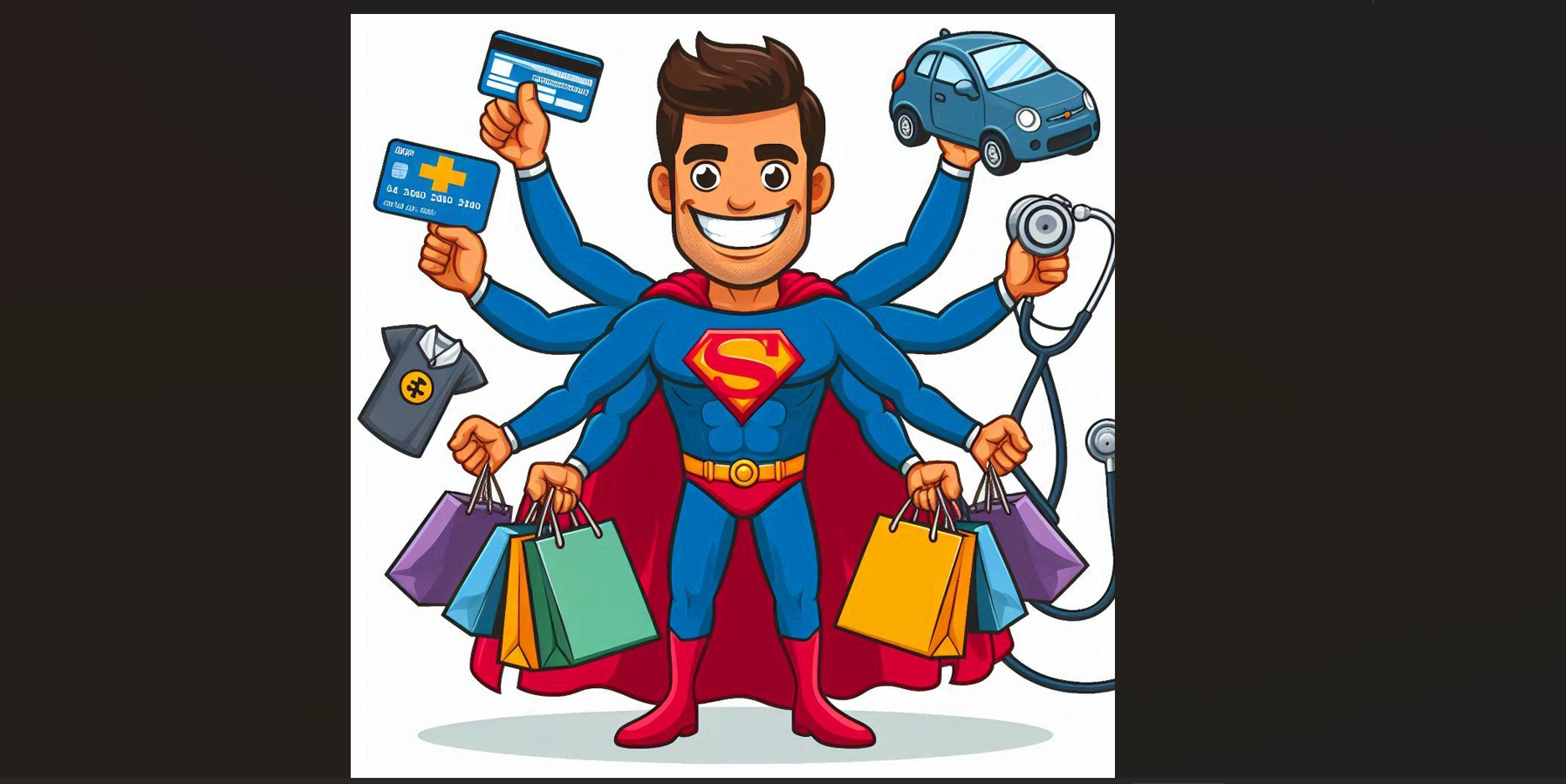Shopping can be fun, but when you have a long list of things to buy that aren’t quite related to each other, it’s not convenient to keep going to different stores. That’s why we have the supermarket, where you can get your long list done in way less time. Now apply the same to super apps.
A super app is essentially a platform that bundles numerous services, such as payments, messaging, transportation, shopping, and food delivery, into one ecosystem, allowing users to access a broad range of functionalities without leaving the app. The rise of super apps in emerging markets like China with WeChat, Southeast Asia with Gojek and Grab, India with Paytm, Latin America with Rappi, and Africa with M-Pesa is reshaping daily life and fueling digital economies in regions that were once underserved by traditional technology and infrastructure.
Read more: Autonomous Vehicles see investment but where is the promise of safety?
Gartner, which likens super apps to a Swiss army knife, expects over 50% of the global population to become daily active users of multiple super apps by 2027. Gartner valued the global super apps market at US$61.30 billion in 2022 and anticipates a growth of 27.8% from 2023 to 2030.
Today, for you to manage a nice lifestyle, you need like 56 applications on your phone, and even then, since those applications are not connected with each other, it’s not convenient. It’s much more convenient when you have a one single solution that memorizes everything you do and then provides you with tailored advice — Ayaz Ahmadov, Founder, Dosty
Ayaz Ahmadov, an entrepreneur who is launching a pet care super app called Dosty, says the primary need that a super app in any sector fulfills is convenience, “Today, for you to manage a nice lifestyle, you need like 56 applications on your phone, and even then, since those applications are not connected with each other, it’s not convenient. It’s much more convenient when you have a one single solution that memorizes everything you do and then provides you with tailored advice.”
But why are super apps thriving in emerging markets?
There are several socio-economic and technological reasons that super apps thrive in emerging markets.
Mobile-First Economies
Emerging markets are often mobile-first economies, which means they’ve leapfrogged traditional tech adoption patterns, going directly to mobile usage instead of passing through desktop or fixed-line internet stages. In these countries, where mobile devices are the primary way of accessing the internet, apps that consolidate services in one place are not just convenient but necessary. This is especially true in regions where low-bandwidth networks and high data costs make switching between apps impractical.
For example, initially a mobile wallet, India’s Paytm transformed into a super app offering services such as bill payments, financial services, shopping, ticket booking, and even banking. Paytm’s growth coincided with the Indian government’s push for digital payments and financial inclusion, making it one of the leading digital payment platforms in the country.
Paytm makes managing my practice seamless by allowing me to receive client payments and handle day-to-day expenses like chamber bills and Uber fares all in one place. It’s a one-stop solution for my financial needs — Advocate Anubhav Roy
“Paytm makes managing my practice seamless by allowing me to receive client payments and handle day-to-day expenses like chamber bills and Uber fares all in one place. It’s a one-stop solution for my financial needs,” says Advocate Anubhav Roy.
Underdeveloped Infrastructure
Many emerging markets have a gap in traditional banking, retail, and transport services, making digital solutions the only viable option. Super apps step in by providing everything from mobile payments to ride-hailing in areas where these services might not otherwise be readily available. By bundling services, they become a one-stop shop for users in remote or underbanked areas.
The Indonesian Gojek began as a ride-hailing app but has since evolved into a super app offering food delivery, mobile payments, digital wallets, and on-demand services like cleaning and massage therapy. It has expanded across Southeast Asia and integrated its services into local economies, playing a pivotal role in driving the digital transformation in Indonesia, Thailand, and Vietnam.
Affordable Solutions
Super apps often offer low-cost or free services and rely on volume to generate profit. Apps like Dosty are eager to enter emerging markets and hence provide Freemium models for users to get started on their apps.
Such apps also offer microloans, mobile wallets, or peer-to-peer payments, tapping into the informal economies where many people operate without access to traditional banking. Grab in Southeast Asia started as a ride-hailing app but has expanded into a multifaceted super app across countries like Singapore, Malaysia, and the Philippines. Grab offers everything from food delivery and grocery shopping to financial services, including micro-lending and insurance. The app is particularly popular because it tailors its services to the specific needs of local populations, such as cash-based transactions and partnerships with local banks.
Digital Inclusion
In regions where the unbanked population is high, super apps provide financial services such as digital wallets and microfinance options, empowering users who otherwise wouldn’t have access to credit, savings, or secure transactions.
In Africa, where traditional banking systems are underdeveloped, Kenya’s M-Pesa has revolutionized financial inclusion. Originally launched as a mobile payment service in Kenya, it now offers services like microloans, savings, and insurance. M-Pesa allows users without bank accounts to conduct digital transactions, send remittances, and even access credit, playing a significant role in improving financial literacy and economic mobility in Kenya and other African nations.
Localized Needs
Super apps often tailor their offerings to meet the specific needs of their local populations. They integrate services that align with cultural practices and economic realities, making them more relevant and effective than global apps like Google or Facebook.
WeChat in China is one of the most well-known super apps. It started as a messaging app but has since grown into a platform offering payments, shopping, gaming, and even doctor consultations. In China, WeChat Pay is used almost ubiquitously for both online and in-person payments, and the app’s mini-programs allow third-party developers to offer services directly within the WeChat ecosystem. WeChat’s influence has expanded beyond China, inspiring similar apps in other regions.
Rappi in Latin America is another super app that has become a household name in the continent. Rappi Prime user Daniela Restrepo says she uses Rappi practically every day.
I’ve used Rappi for over six years now and it’s been such a useful app, aside from being a great ally. When I’m working from home and I need a quick and yummy lunch or missing ingredients for my recipe, it has really helped me with delivery favors I can’t do myself. Their card gives me benefits within the app, and so far the experience and interaction with it has been seamless and great — Daniela Restrepo
“I’ve used Rappi for over six years now and it’s been such a useful app, aside from being a great ally. When I’m working from home and I need a quick and yummy lunch or missing ingredients for my recipe, it has really helped me with delivery favors I can’t do myself. Their card gives me benefits within the app, and so far the experience and interaction with it has been seamless and great,” she says.
The Future of Super Apps in Emerging Markets
As mobile usage continues to rise and internet penetration deepens in regions like Africa, South America, and Southeast Asia, super apps are likely to become even more indispensable. These apps particularly appeal to the younger generation.
Younger demographics, who will make up an increasingly large percentage of overall target customers for industries, are very comfortable interacting with super apps and chatbots and often prefer this option over traditional options like call centers. It’s no surprise companies can tap into these trends to future-proof the way they deliver services — Ranjit Tinaikar, CEO of Ness Digital Engineering
“Younger demographics, who will make up an increasingly large percentage of overall target customers for industries, are very comfortable interacting with super apps and chatbots and often prefer this option over traditional options like call centers. It’s no surprise companies can tap into these trends to future-proof the way they deliver services,” says Ranjit Tinaikar, CEO of Ness Digital Engineering.
As these apps grow, the competition to dominate regional markets will intensify. Companies like Grab, Paytm, and Gojek are already expanding into adjacent markets, while international giants like Meta and Google are exploring similar models to tap into this emerging trend. Meta has already integrated payments into WhatsApp while Amazon has Amazon Pay, and Google Pay is raking in users in India.
Read more: AI vs. human: Who is winning at being human?
However, challenges remain. Data privacy concerns, regulatory hurdles, and market fragmentation may slow down the expansion of these digital ecosystems. Additionally, while super apps are offering convenience and financial inclusion, there are concerns about the concentration of power in a few tech companies, potentially limiting competition and innovation.
Still, at the same time, with players like WeChat, Gojek, and Paytm leading the charge, these apps are creating a new digital economy, offering everything from financial inclusion to everyday conveniences. As they continue to evolve, super apps have the potential to become the primary platforms for commerce, communication, and innovation in the developing world.












